Abstract
Micropuncture studies were carried out in the rat to evaluate the in situ distensibility characteristics of the proximal and distal tubules under a variety of experimental conditions. In the first phase, we determined the response of tubular diameter (D) to changes in tubular pressure (P) induced by partially obstructing single tubules. The response observed under these conditions (i.e., when interstitial pressure is presumed to be constant) has been defined as the compliance of the tubule. Over the range of tubular pressures studied (10-35 mm Hg for the proximal tubule, 5-25 mm Hg for the distal tubule) the compliance characteristics of the proximal and distal tubule were found to be markedly different; the proximal tubular pressure-diameter relationship was linear, ΔD/ΔP = 0.45 μm/mm Hg, whereas the distal pressure-diameter relationship was curvilinear, ΔD/ΔP = c−0.1×P+2.2.
In the second phase we used the compliance data to construct a series of theoretical pressure-diameter curves that define the response of the tubule to increments in interstitial as well as intratubular pressure. These curves indicate that changes in distal diameter should provide a sensitive index of a rise in interstitial pressure under conditions in which the transtubular pressure gradient is increased by a small amount, but that proximal diameter should provide a more sensitive index of changes in interstitial pressure when the transtubular pressure gradient is increased by a large amount. In subsequent experiments in which furosemide was administered, we observed that the pressure-diameter relationships for both the proximal and distal tubule were indistinguishable from the compliance curves, a finding consistent with the interpretation that interstitial pressure was not appreciably changed from control. By contrast, when mannitol was administered, both proximal and distal tubular pressure-diameter relationships were significantly altered in a fashion consistent with a large increase in interstitial pressure. Neither with furosemide nor mannitol administration did it appear likely that significant changes in tubular compliance could account for the observed behavior of the tubule.
Finally, we propose that a knowledge of tubular compliance will be useful in exploring the interrelationships between tubular and peritubular pressures, tubular anatomy, and transtubular ionic permeability. Recent studies linking changes in the geometry of lateral intercellular spaces of the tubule to changes in passive ion movement suggest that an investigation of such anatomical-functional correlates should be productive.
Full text
PDF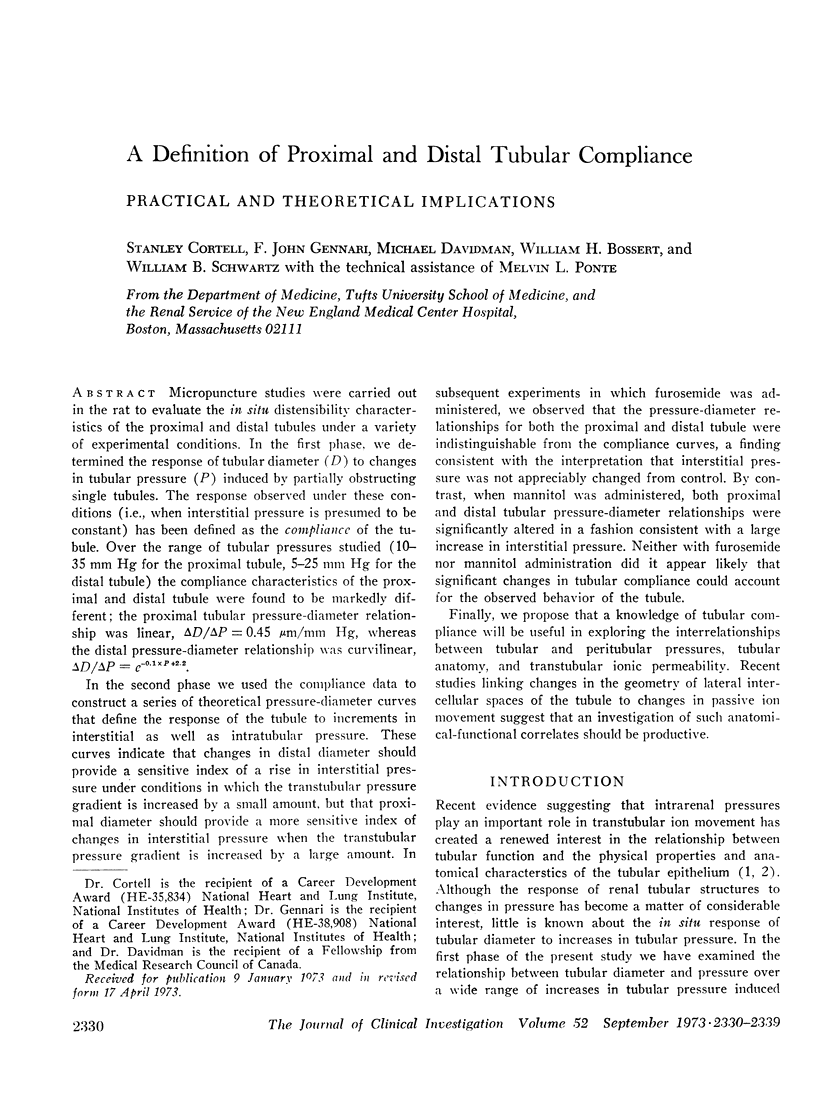
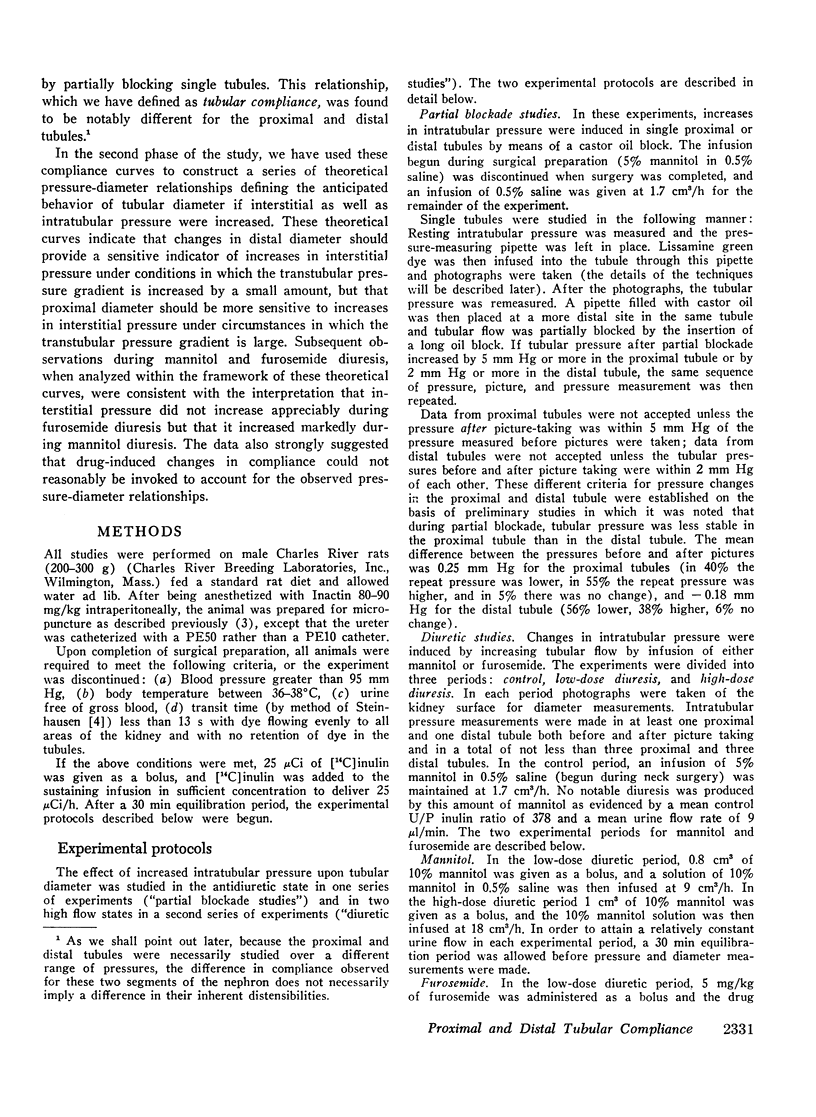
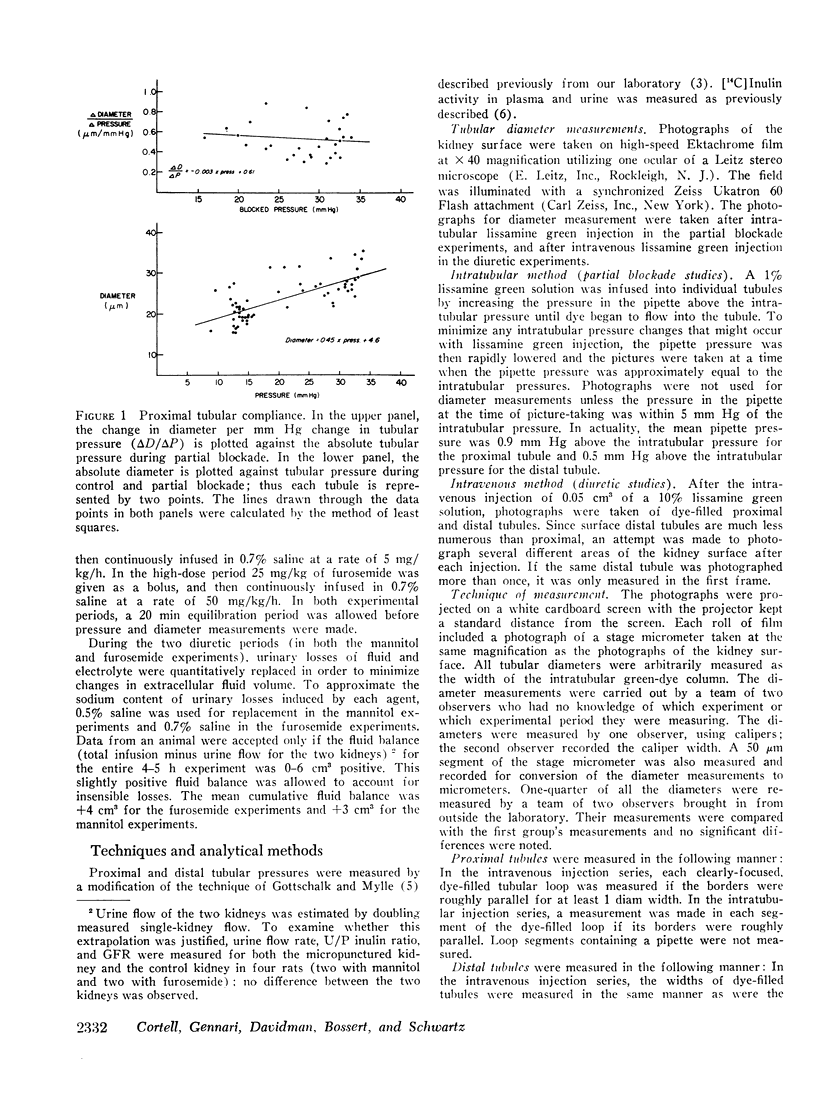
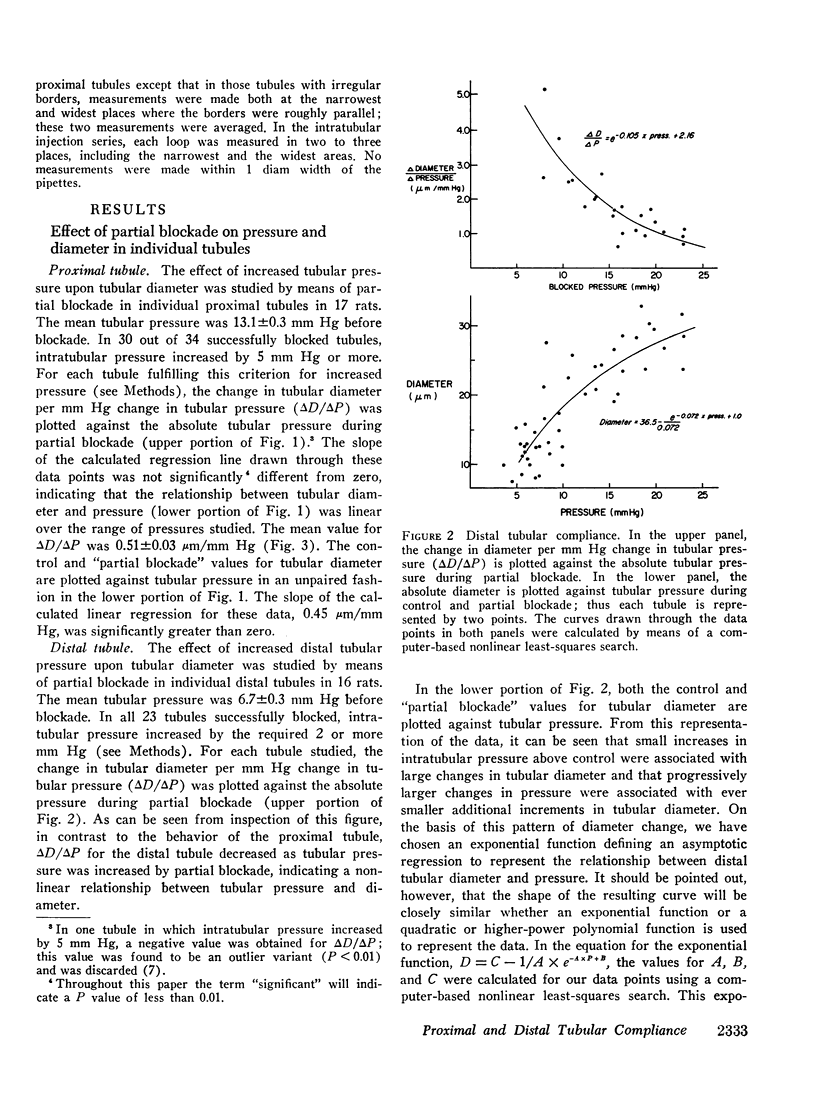
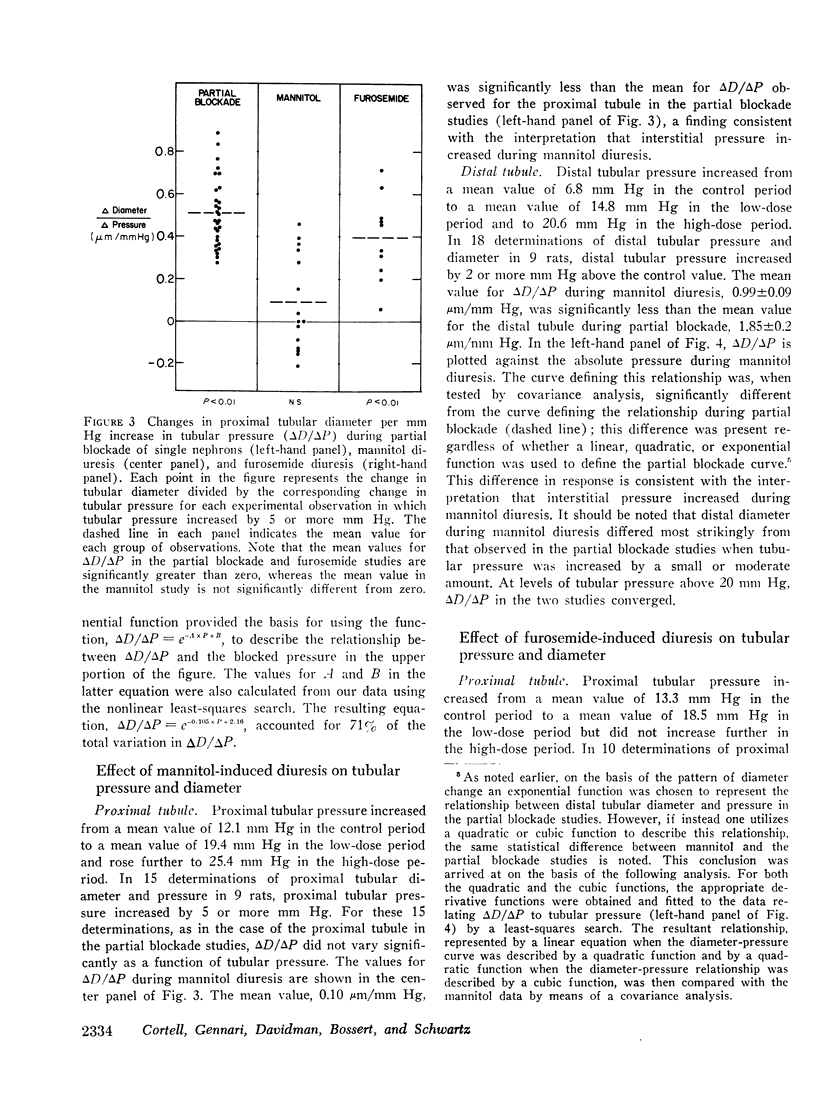
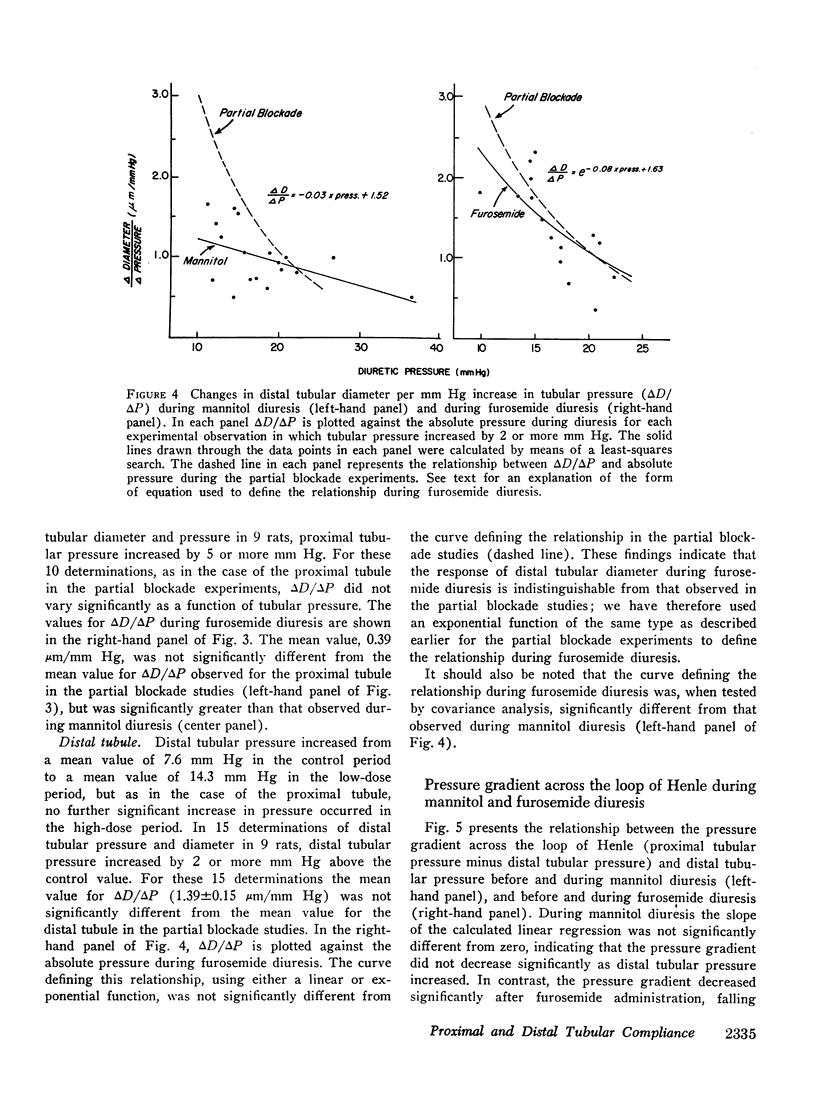
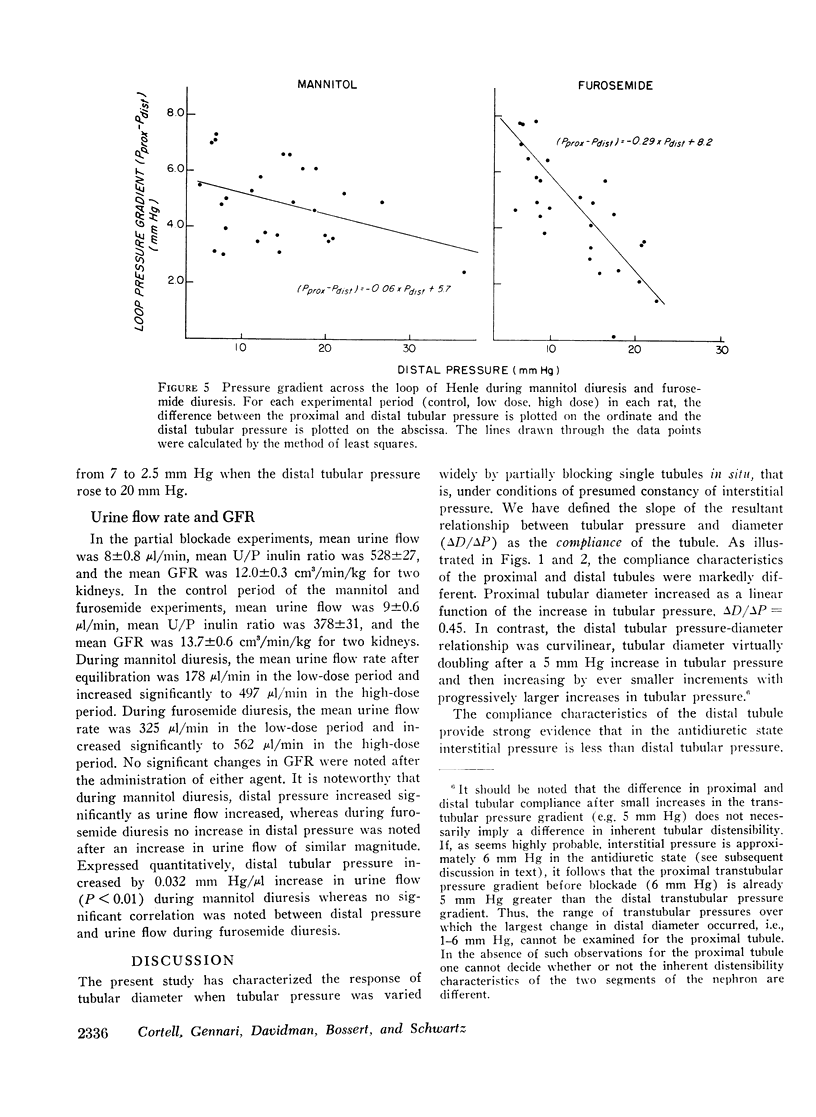

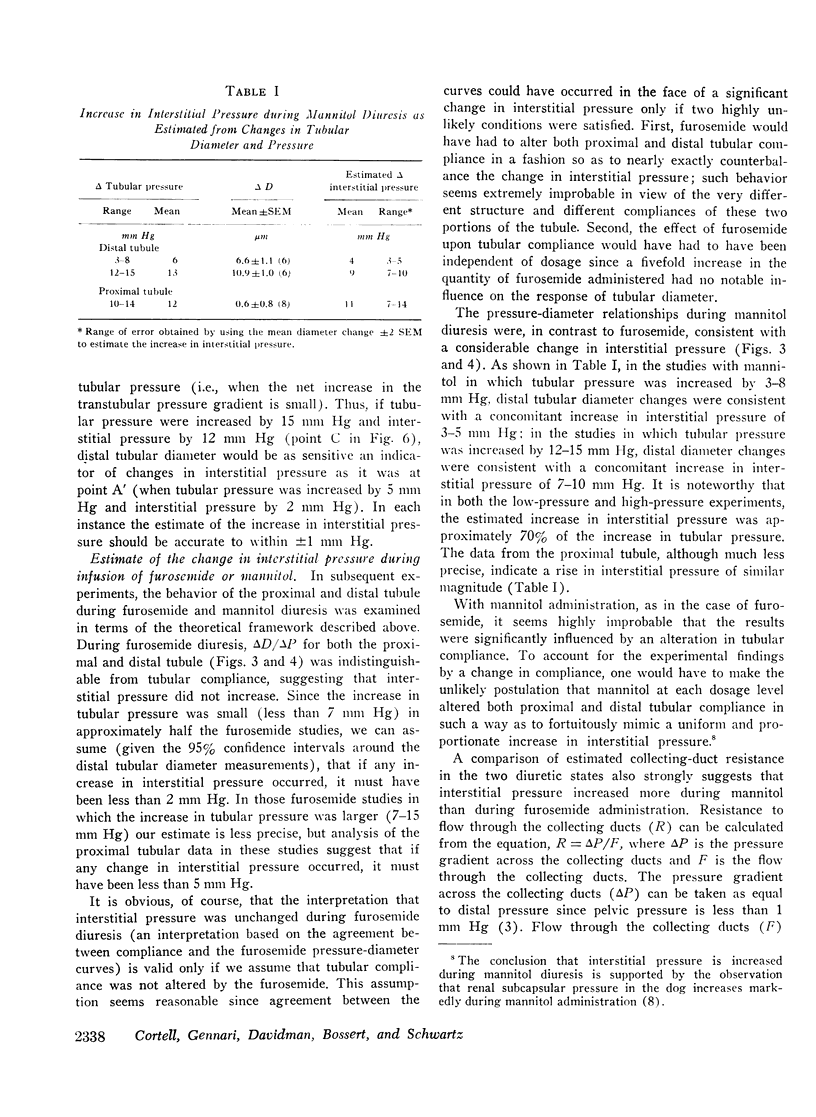
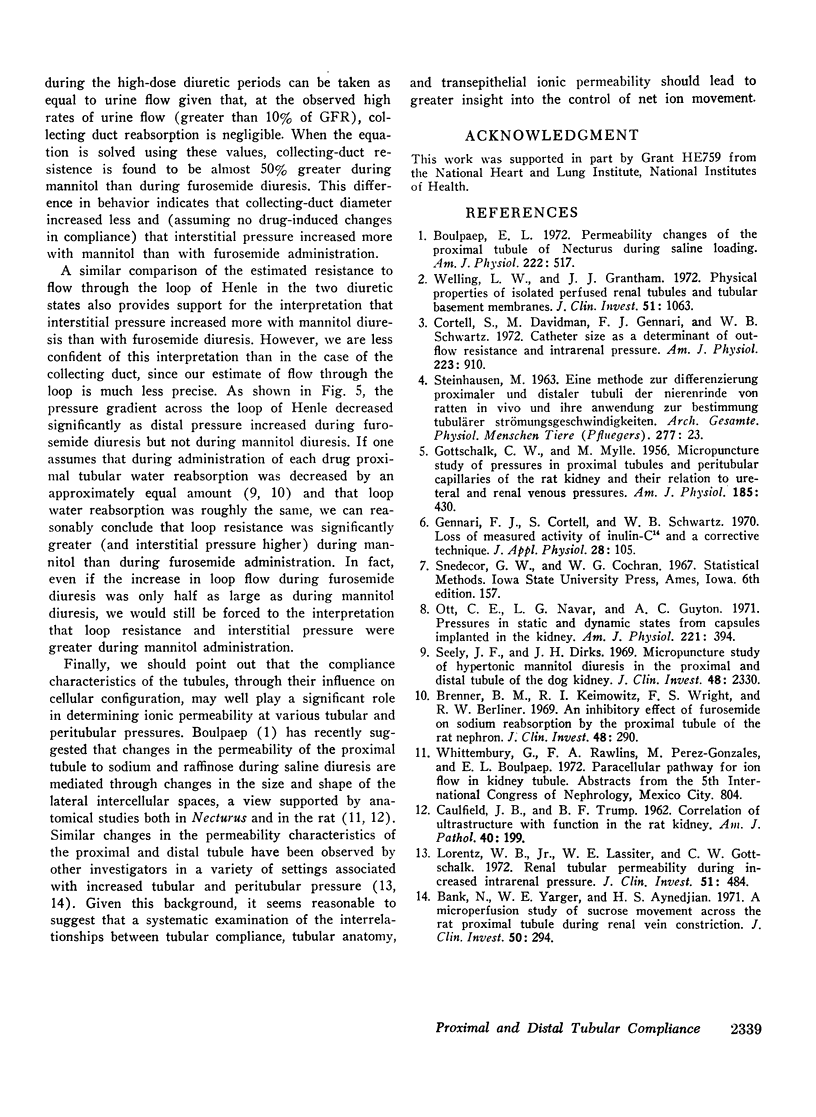
Selected References
These references are in PubMed. This may not be the complete list of references from this article.
- Bank N., Yarger W. E., Aynedjian H. S. A microperfusion study of sucrose movement across the rat proximal tubule during renal vein constriction. J Clin Invest. 1971 Feb;50(2):294–302. doi: 10.1172/JCI106494. [DOI] [PMC free article] [PubMed] [Google Scholar]
- Boulpaep E. L. Permeability changes of the proximal tubule of Necturus during saline loading. Am J Physiol. 1972 Mar;222(3):517–531. doi: 10.1152/ajplegacy.1972.222.3.517. [DOI] [PubMed] [Google Scholar]
- Brenner B. M., Keimowitz R. I., Wright F. S., Berliner R. W. An inhibitory effect of furosemide on sodium reabsorption by the proximal tubule of the rat nephron. J Clin Invest. 1969 Feb;48(2):290–300. doi: 10.1172/JCI105985. [DOI] [PMC free article] [PubMed] [Google Scholar]
- CAULFIELD J. B., TRUMP B. F. Correlation of ultrastructure with function in the rat kidney. Am J Pathol. 1962 Feb;40:199–218. [PMC free article] [PubMed] [Google Scholar]
- Cortell S., Davidman M., Gennari F. J., Schwartz W. B. Catheter size as a determinant of outflow resistance and intrarenal pressure. Am J Physiol. 1972 Oct;223(4):910–915. doi: 10.1152/ajplegacy.1972.223.4.910. [DOI] [PubMed] [Google Scholar]
- GOTTSCHALK C. W., MYLLE M. Micropuncture study of pressures in proximal tubules and peritubular capillaries of the rat kidney and their relation to ureteral and renal venous pressures. Am J Physiol. 1956 May;185(2):430–439. doi: 10.1152/ajplegacy.1956.185.2.430. [DOI] [PubMed] [Google Scholar]
- Gennari F. J., Cortell S., Schwartz W. B. Loss of measured activity of inulin-14C and a corrective technique. J Appl Physiol. 1970 Jan;28(1):105–107. doi: 10.1152/jappl.1970.28.1.105. [DOI] [PubMed] [Google Scholar]
- Lorentz W. B., Jr, Lassiter W. E., Gottschalk C. W. Renal tubular permeability during increased intrarenal pressure. J Clin Invest. 1972 Mar;51(3):484–492. doi: 10.1172/JCI106836. [DOI] [PMC free article] [PubMed] [Google Scholar]
- Ott C. E., Navar L. G., Guyton A. C. Pressures in static and dynamic states from capsules implanted in the kidney. Am J Physiol. 1971 Aug;221(2):394–400. doi: 10.1152/ajplegacy.1971.221.2.394. [DOI] [PubMed] [Google Scholar]
- Seely J. F., Dirks J. H. Micropuncture study of hypertonic mannitol diuresis in the proximal and distal tubule of the dog kidney. J Clin Invest. 1969 Dec;48(12):2330–2340. doi: 10.1172/JCI106199. [DOI] [PMC free article] [PubMed] [Google Scholar]
- Welling L. W., Grantham J. J. Physical properties of isolated perfused renal tubules and tubular basement membranes. J Clin Invest. 1972 May;51(5):1063–1075. doi: 10.1172/JCI106898. [DOI] [PMC free article] [PubMed] [Google Scholar]


